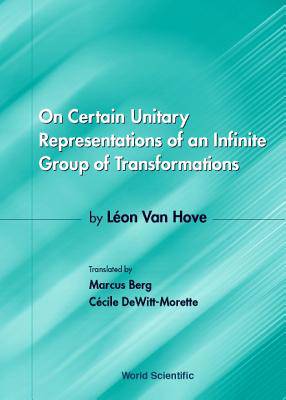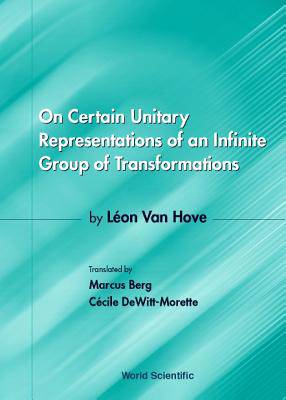
- Retrait gratuit dans votre magasin Club
- 7.000.000 titres dans notre catalogue
- Payer en toute sécurité
- Toujours un magasin près de chez vous
- Retrait gratuit dans votre magasin Club
- 7.000.0000 titres dans notre catalogue
- Payer en toute sécurité
- Toujours un magasin près de chez vous
On Certain Unitary Representations of an Infinite Group of Transformations - Thesis by Leon Van Hove
Marcus Berg, Cecile Dewitt-Morette
Livre broché | Anglais
47,95 €
+ 95 points
Description
On April 20, 1951, Léon Van Hove presented his thesis "Sur certaines représentations unitaires d'un groupe infini de transformations' to the Université libre de Bruxelles (Free University of Brussels), two days before the University of Grenoble had approved the creation of L'Ecole d'été de physique théorique at Les Houches (Haute Savoie, France). The first session of the "Ecole des Houches" began on July 15, 1951, with a month-long course by Van Hove on quantum mechanics. The lecture notes for this course were written for the benefit of physicists who -- like most of their colleagues outside the US, Canada, and England at that time -- did not know quantum mechanics but wanted to learn it seriously. Van Hove's course met their expectations fully. The physics course benefitted from the mathematical expertise of the lecturer, which is also apparent in this thesis. Without his own research as scaffolding, Van Hove could not have built the short and beautiful course which provided the participants with a solid, useful foundation in modern physics.The lecture notes are in French. If they had been in English they would have been published together with the translation of the thesis. The first three pages of the notes are reproduced at the end of this book. The set of notes was reproduced by stencils and distributed to the participants at the beginning of the course.The translation of Léon Van Hove's thesis was initiated in late 2000, when Bob Hermann, formerly in the Department of Mathematics at MIT, sent to Van Hove's son Michel his view on the thesis: "I would consider it as one of the most important mathematical physics papers of the past fifty years, containing the key ideas for what has become known as 'geometric quantization.'" Indeed, the thesis is interesting both to historians of science and to theoretical physicists and mathematicians exploring the relationships between quantum and classical physics, based on the Hilbert-space approach to classical mechanics.
Spécifications
Parties prenantes
- Auteur(s) :
- Editeur:
Contenu
- Nombre de pages :
- 104
- Langue:
- Anglais
Caractéristiques
- EAN:
- 9789810246433
- Date de parution :
- 18-05-01
- Format:
- Livre broché
- Format numérique:
- Trade paperback (VS)
- Dimensions :
- 162 mm x 218 mm
- Poids :
- 154 g

Les avis
Nous publions uniquement les avis qui respectent les conditions requises. Consultez nos conditions pour les avis.






